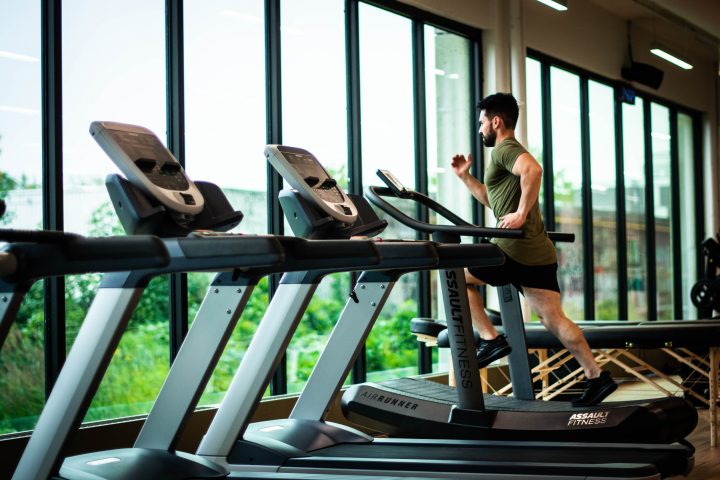Regular exercise can make you healthier, happier, and more motivated, but it can also leave you with a sense of muscle soreness. That’s why it’s important to take the right steps to look after your body post-workout.
It’s not necessarily as simple as abstaining from exercise for a day or two. The most effective muscle recovery routine might include a thorough warm-down, post-workout nutrition, an escape to the spa – or a combination of all three.
Why is recovery so important?
Considering the time for recovery should be a vital part of any training session, especially if your goal is to reach or maintain peak physical condition. With a post-workout recovery routine, you’re much more likely to avoid injuries. With sufficient rest, you will most likely boost your motivation to stick to your fitness plan – and gain the energy to breeze through day-to-day tasks.
Recovery is also important because it encourages you to listen to your body and take appropriate steps if you feel ill or in pain. After all, you can only perform at your optimum level if your body is fully restored and revitalised. Elite athletes understand this well. Former England women’s national team striker, Kelly Smith, explained the importance of recovery at a major tournament like the Euros:
“We spend most of our time focusing on tactics, team shape, walkthroughs, and set pieces. This allows for recovery and less stress on the body… For me, it’s more about trying to take my mind off the pressure, intensity, and scrutiny that a major tournament brings and finding a balance between being focused and relaxed so I’m ready to perform.”
Kelly Smith, Former England Women’s National Team Striker
What causes muscle soreness after exercise?
The good news is that the soreness and stiffness usually don’t last long and can be a sign of improving fitness. The bad news is that, well, it hurts!
In the past, muscle soreness was solely attributed to the accumulation of lactic acid. While it’s true that lactic acid can cause discomfort, it is now understood it only lasts in your muscles for a matter of hours after a workout.
These days it’s thought that moderate-to-intense physical exercise – when muscles are required to work harder or in a different way than usual – causes microscopic tears in the muscle fibres. These tears cause muscle soreness, but they should also be respected: when the body repairs them, it builds back the fibres stronger, resulting in greater muscle mass and density.
Delayed onset muscle soreness (DOMS)
According to the NHS, delayed onset muscle soreness, or DOMS, can occur when you start a new exercise programme, change your exercise routine, or increase the duration or intensity of your regular workout.
DOMS usually occurs 1-2 days after exercise, typically lasts 3-5 days in total, and is not usually a cause for concern. Even so, you should be careful not to confuse it with muscle strains, sprains, or any kind of pain experienced during exercise, such as the sudden sting of an injury In those instances, you should consult a medical professional.
How long should you let sore muscles recover?
There is no set recovery period for everyone. It all depends on the type and duration of the workout, as well as the intensity and frequency of your exercise, what you eat, and your overall physical fitness. But one thing is for sure: at least some rest is crucial because all those strengths and muscle gains actually occur outside the gym during periods of rest.
After a heavy workout, your recovery could take anything from 24 hours to a week. But remember that you can continue exercising as long as you focus on a different muscle group. Recovery after running, for example, might include an upper arm workout or a gentle session in the pool, which is unlikely to impede recovery for the leg muscles.
How long should you let sore muscles recover?
Although the golden rule is to listen to your body and give it the time it needs, there are ways to speed up the recovery process over time.
- Engage in active recovery: is the most obvious way to treat post-exercise soreness. But you can also try active recovery, which includes light activity (such as moderate cardio or a low-impact workout) to help promote blood flow to the affected muscle. Our gyms are well-equipped for this kind of recovery exercise.
- Remember to rehydrate: rehydration is essential if you’ve broken a sweat – and not only because it quenches your thirst. Replenishing fluid levels helps to improve muscle flexibility, build strength, and prevents muscle soreness. Drink plenty of water or low-sugar sports drinks that contain electrolytes. Avoid sugary, caffeinated, and alcoholic drinks, all of which may worsen dehydration.
- Eat Well: Not sure what to eat after a workout? Make sure you line up a healthy snack or meal within 45 minutes of completing your workout. This will help replenish muscle energy stores and start the recovery process. Foods with complex carbohydrates will restore glycogen levels, while high-protein foods contain amino acids that help to repair and rebuild muscles.
- Relax: There’s never a bad time to relax and unwind in the spa, but it’s especially satisfying after exercise. It may also speed up the recovery process by relieving muscle tension and increasing blood circulation, carrying more oxygen-rich blood to oxygen-depleted muscle. Just 10-15 minutes in a sauna or steam room is enough to unlock this benefit, but you can stay longer if you like…
This post originally appeared on the David Lloyd blog.




